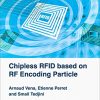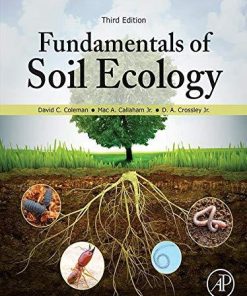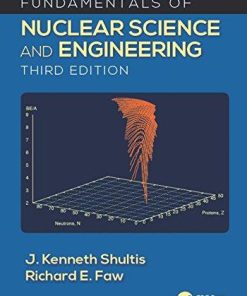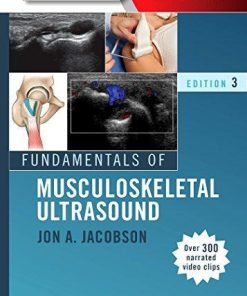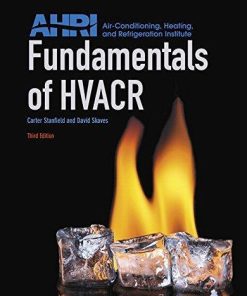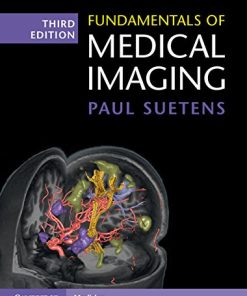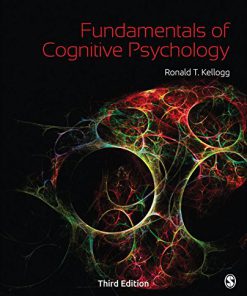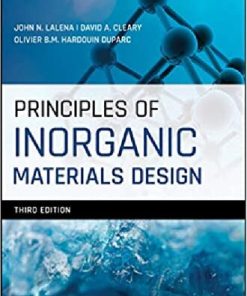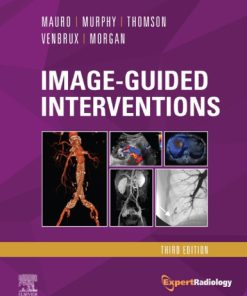Fundamentals of Inorganic Glasses 3rd Edition by Arun Varshneya, John Mauro 0128162260 9780128162262
$50.00 Original price was: $50.00.$25.00Current price is: $25.00.
Fundamentals of Inorganic Glasses 3rd Edition by Arun K. Varshneya, John C. Mauro – Ebook PDF Instant Download/DeliveryISBN: 0128162260 9780128162262
Full download Fundamentals of Inorganic Glasses 3rd Edition after payment.
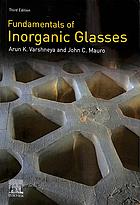
Product details:
ISBN-10 : 0128162260
ISBN-13 : 9780128162262
Author : Arun K. Varshneya, John C. Mauro
Fundamentals of Inorganic Glasses, Third Edition, is a comprehensive reference on the field of glass science and engineering that covers numerous, significant advances. This new edition includes the most recent advances in glass physics and chemistry, also discussing groundbreaking applications of glassy materials. It is suitable for upper level glass science courses and professional glass scientists and engineers at industrial and government labs. Fundamental concepts, chapter-ending problem sets, an emphasis on key ideas, and timely notes on suggested readings are all included. The book provides the breadth required of a comprehensive reference, offering coverage of the composition, structure and properties of inorganic glasses.
Fundamentals of Inorganic Glasses 3rd Table of contents:
Chapter 1: Introduction
1.1. Brief history
1.2. Glass families of interest
1.3. Vitreous silica
1.4. Soda lime silicate glass
1.5. Borosilicate glass
1.6. Lead silicate glass
1.7. Aluminosilicate glass
1.8. Bioactive glasses
1.9. Other silica-based oxide glasses
1.10. Other nonsilica-based oxide glasses
1.11. Halide glasses
1.12. Amorphous semiconductors
1.13. Chalcogenide and chalcohalide glasses
1.14. Metallic glasses
1.15. Glass-like carbon
1.16. Mixed anion glasses
1.17. Metal-organic framework glasses
1.18. A brief note on glasses found in nature
1.19. Glass greats: Antonio Neri and Norbert J. Kreidl
Summary
Online resources
Exercise
References
Chapter 2: Fundamentals of the glassy state
2.1. What is glass?
2.2. The V-T diagram
2.3. Pair correlation function and RDF
2.4. Anomalies in the V-T diagram
2.5. Revisiting the definition of glass and its distinction from an amorphous solid and a liquid
2.6. Glass greats: A.R. Cooper, Jr.
Summary
Online resources
Exercises
References
Chapter 3: Glass formation principles
3.1. Structural theories of glass formation
3.1.1. Zachariasen’s Random Network Theory (RNT)
3.1.2. Phillips’s topological constraint theory
3.1.3. Glass network formers (NWFs), network modifiers (NWMs) and intermediates
3.2. Russian workers criticism of Zachariasen’s hypothesis
3.3. The kinetic theory of glass formation
3.3.1. The nucleation rate
3.3.2. Crystal growth rate
3.3.3. T-T-T diagram
3.4. Beyond classical nucleation theory
3.5. Glass greats: W.H. Zachariasen and E.A. Porai-Koshits
Summary
Exercises
References
Chapter 4: Glass microstructure: Phase separation and liquid immiscibility
4.1. Thermodynamics of mixing
4.2. More formal analysis of phase separation
4.3. Electron microscopy to observe phase separation in glass
4.4. Observations of phase separation in glass
4.5. Observations of controlled crystallization in glass (glass-ceramics)
4.6. Polyamorphism in glass-forming systems
4.7. Glass Greats: J.W. Cahn and S.D. Stookey
Summary
Online Resources
Exercises
References
Chapter 5: Glass compositions and structures
5.1. Presentation of glass formulae
5.2. Silica glass
5.3. Boric oxide glass
5.4. Alkali silicate glasses
5.5. Alkali-alkaline earth-silicate glasses
5.6. Alkali borate glasses
5.7. The boron anomaly
5.8. Alkali borosilicate glasses
5.9. Alkali aluminosilicate glasses
5.10. Alkali boroaluminosilicate glasses
5.11. Lead, bismuth, thallium silicate, or borate glasses
5.12. Phosphate glasses
5.13. Other oxide glasses
5.14. Amorphous silicon and germanium
5.15. Metallic glasses
5.16. Chalcogenide and chalcohalide glasses
5.17. Halides and heavy metal fluoride glasses (HMFG)
5.18. Oxynitride and oxyhalide glasses
5.19. Metal-organic framework (MOF) glasses
5.20. Glass greats: B.E. Warren and P.J. Bray
Summary
Online Resources
Exercises
References
Chapter 6: Composition-structure-property relationship principles
6.1. General principles
6.2. Additivity relationships
6.3. Nonlinearities in glass properties
6.4. Glass property databases
6.5. Glass greats: G.W. Morey
Summary
Online resources
References
Chapter 7: Density and molar volume
7.1. Definitions
7.2. Methods of measurement
7.3. Dependence on cooling rate, temperature, and composition
7.4. Densification of glasses by high pressure or irradiation
7.5. Calculation of density
7.6. Glass greats: W.E.S. Turner
Summary
Online resources
Exercises
References
Chapter 8: Elastic properties and hardness of glass
8.1. Introduction
8.2. Elastic properties of glass
8.2.1. The terminology of elasticity
8.2.2. Methods of measuring elastic moduli
8.2.3. Elastic moduli vs glass composition
8.2.4. Strain, temperature, and pressure dependence of elastic moduli
8.2.5. The atomistic approach to elastic behavior
8.2.6. Elastic properties of bulk metallic glasses
8.3. Hardness of glass
8.3.1. Yield point and hardness
8.3.2. Measurement of hardness
8.3.3. The shape of indentations
8.3.4. Hardness versus glass composition
Summary
Exercises
References
Chapter 9: The viscosity of glass
9.1. Introduction
9.2. Viscosity reference points
9.3. Measurement of viscosity
9.4. Viscosity of some common glasses
9.5. Models for the temperature dependence of viscosity
9.5.1. Vogel-Fulcher-Tammann (VFT) equation
9.5.2. Avramov-Milchev (AM) equation
9.5.3. Angell’s concept of fragility
9.5.4. Entropy model of viscosity: The Adam-Gibbs equation
9.5.5. Mauro-Yue-Ellison-Gupta-Allan (MYEGA) equation
9.6. Composition dependence of viscosity
9.7. Viscosity of cathedral glass at room temperature (the “urban legend´´)
9.8. Non-Newtonian viscosity
9.9. Volume viscosity
9.10. Glass greats: G.S. Fulcher and R.W. Douglas
Summary
Online Resources
Exercises
References
Chapter 10: Thermal expansion of glass
10.1. Introduction
10.2. Definitions
10.3. Methods of thermal expansion measurement
10.4. Thermal expansion versus composition and temperature
10.5. Concepts of glass expansion
10.6. Configurational versus vibrational contributions to thermal expansion
10.7. Thermal stresses and thermal shock resistance
10.8. Glass greats: Harold Rawson
Summary
Online Resources
Exercises
References
Chapter 11: Heat capacity of glass
11.1. Introduction
11.2. Measurement of heat capacity
11.3. Composition dependence
11.4. Temperature dependence
11.5. Glass greats: Cornelius T. Moynihan
Summary
Online resources
Exercise
References
Chapter 12: Thermal conductivity and acoustic properties of glass
12.1. Introduction
12.2. Measurement of thermal conductivity
12.3. Composition and temperature dependence
12.4. Acoustic properties of glass
12.5. Glass greats: Frank W. Preston
Summary
Online resources
Exercises
References
Chapter 13: Glass transition range behavior
13.1. Introduction
13.2. Viscoelastic properties of glass
13.2.1. About relaxation
13.2.2. Maxwell element
13.2.3. Voigt-Kelvin element
13.2.4. Delayed elasticity
13.3. Structural relaxation due to temperature change
13.4. Viscosity-free volume theories of glass transition
13.5. Thermodynamics of the glass transition
13.5.1. Thermodynamic orders of phase transition
13.5.2. Adam-Gibbs model of cooperative relaxations
13.5.3. Stillinger model of inherent structures
13.5.4. Configurational contributions to physical properties at the glass transition
13.6. Kinetics of the glass transition
13.6.1. “Watching´´ the relaxation (concept of the Deborah number)
13.6.2. Tool’s fictive temperature theory
13.6.3. About the DTA and DSC of the glass transition
13.6.4. Difficulties with Tool’s single Tf concept
13.6.5. Narayanaswamy’s model of structural relaxation
13.6.6. Description of the crossover experiment in terms of Narayanaswamy’s model for relaxation
13.6.7. Mauro-Allan-Potuzak (MAP) model of relaxation dynamics
13.7. Property data in the Tg range
13.8. Development of permanent stresses in glass by cooling through the transition range
13.9. Concepts of annealing and tempering
13.10. Glass greats: A. Q. Tool and W. Kauzmann
Summary
Online Resources
Exercises
References
Chapter 14: Permeation, diffusion, and ionic conduction in glass
14.1. Introduction
14.2. More on the atomic theory of diffusion and electrical conduction
14.2.1. Mechanisms of diffusion
14.2.2. Correlation effects
14.2.3. Haven ratio
14.2.4. Isotope effect
14.2.5. Temperature dependence of diffusion and electrical conduction
14.3. Measurement of gas permeability
14.4. Measurement of diffusion coefficients
14.4.1. Self-diffusion coefficients
14.4.2. Measurement of chemical diffusion coefficients
14.5. Measurement of electrical conductivity
14.6. Data on permeability and molecular diffusion of gases in Glass
14.7. Data on ionic diffusion and electrical conduction in Glass
14.8. Some aspects of diffusion and conduction phenomena
14.8.1. Ion exchange
14.8.2. Multicomponent diffusion
14.8.3. Fast ion conduction
14.8.4. Anionic conduction
Summary
Online Resources
Exercises
References
Chapter 15: Dielectric properties
15.1. Introduction
15.2. Measurement of dielectric properties
15.3. Data on dielectric properties and AC conduction in glass
Summary
References
Chapter 16: Electronic conduction
16.1. Introduction
16.2. Concepts of electronic conduction in amorphous solids
16.3. Defects in noncrystalline solids and their management
16.4. Photoconductivity, photoluminescence, and xerography
16.5. Photovoltaics and solar cells
16.6. Switching and computer memory device
16.7. Glass greats: N.F. Mott and S.R. Ovshinsky
Online Resources
References
Chapter 17: Chemical durability
17.1. Introduction
17.2. Mechanisms of durability and weatherability
17.3. Measurement of chemical durability
17.4. Data on chemical durability
17.5. Methods of improving chemical durability
17.6. Glass greats: L. L. Hench
Summary
Online resources
Exercises
References
Chapter 18: Strength and toughness
18.1. Introduction
18.2. Theoretical strength of a flawless brittle solid
18.3. Strength of a flawed brittle solid: Griffith’s analysis
18.4. Elementary fracture mechanics concepts
18.5. Glass fatigue
18.6. Mechanism of strength based on slow crack growth
18.7. Elementary fractographic analysis
18.8. Damage introduction in glass
18.9. Fracture statistics
18.10. Life prediction
18.11. Experimental measurement of glass strength and fracture toughness
18.12. Data on strength and fatigue parameters
18.13. Stronger glass products: Strengthening, hardening, and toughening
18.14. Topological considerations of glass strength
Summary
Exercises
References
Chapter 19: Optical properties
19.1. Introduction
19.2. Some theoretical concepts
19.2.1. Dispersion
19.2.2. Scattering
19.2.3. Absorption in the VIS region (colors in glass)
19.2.4. Absorption in the UV
19.2.5. Absorption in the IR
19.2.6. Photoelastic properties
19.2.7. Anomalous birefringence
19.3. Measurement of optical properties
19.4. Data on optical properties
19.5. Special applications
19.5.1. Photosensitive glasses
19.5.2. Nonlinear optics
19.5.3. Glass as a laser host
19.5.4. Fiber optics
19.5.5. Coatings on glass to improve optical quality
19.6. Glass greats: Otto Schott and Amal Paul
Summary
Online Resources
Exercise
References
Chapter 20: Glass surfaces
20.1. Introduction
20.2. Surface tension of glass
20.2.1. Methods of measurement
20.2.2. Dependence of surface tension on composition
20.3. Glass surface chemistry and structure
20.4. Surface relaxation
20.5. Surface chemical analysis
20.6. Glass greats: Robert H. Doremus
Summary
Online Resources
References
Chapter 21: Modeling of glass
21.1. Introduction
21.2. Quantum mechanical techniques
21.3. Classical molecular dynamics
21.4. Monte Carlo techniques
21.5. Statistical mechanical modeling of glass structure
21.6. Energy landscapes
21.7. Topological constraint theory
21.8. Finite element method
21.9. Empirical modeling and machine learning
21.10. Model-driven design of glasses
Summary
Online Resources
References
Chapter 22: Fundamentals of inorganic glass making
22.1. Laboratory melting of glasses
22.1.1. Oxide glasses
22.1.2. Chalcogenide glasses
22.1.3. Heavy metal fluoride glasses (HMFG)
22.1.4. Thioborates
22.2. Continuous melting of glass
22.3. Nonfusion-based techniques of glass making
22.3.1. Glass making directly from the solid state
22.3.2. Glass making directly from the gaseous state
22.3.3. Glass making via the sol-gel process
22.3.3.1. Introduction
22.3.3.2. Raw materials
22.3.3.3. Typical experimental procedure
22.3.3.4. Chemical reactions
22.3.3.5. Drying
22.3.3.6. Sintering
22.3.3.7. Microstructure and nanostructure
22.4. The forming of glass products
22.4.1. Glass containers
22.4.2. Flat glass
22.4.3. Glass tubes and rods
22.4.4. Glass fibers
22.5. Glass greats: Michael Joseph Owens, Sir Alastair Pilkington, and Michael Cable
Online Resources
Exercise
References
Chapter 23: Emerging applications of glass
23.1. Introduction
23.2. Glass for energy applications
23.3. Glass and the environment
23.4. Glass for information technology
23.5. Glass for architecture
23.6. Glass for transportation
23.6.1. Antiballistic glass
23.7. Glass for pharmaceutical packaging
23.8. Biocompatible and bioactive glasses
23.9. Glass greats: Elias Snitzer
People also search for Fundamentals of Inorganic Glasses 3rd:
undamentals of inorganic glasses
varshneya fundamentals of inorganic glasses
fundamentals of inorganic glasses pdf
fundamentals of inorganic glasses by arun k varshneya
what is inorganic glass
Tags:
Fundamentals,Inorganic Glasses,Arun Varshneya,John Mauro
You may also like…
Uncategorized
Chemistry - Inorganic Chemistry
Uncategorized
Uncategorized


